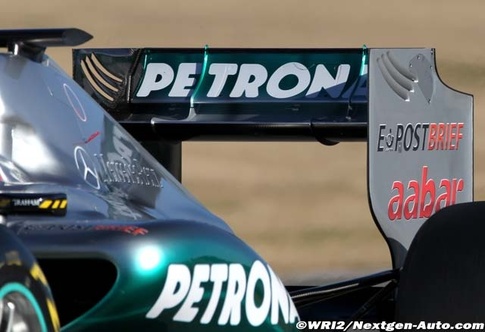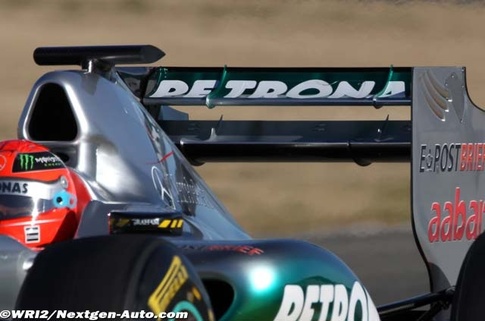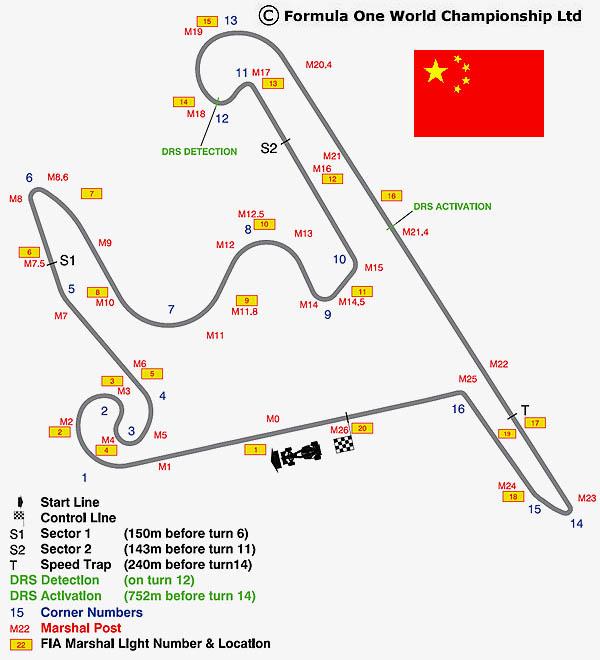The 2012 Formula 1 season is shaping up to be an exciting one. The Drag Reduction System (DRS) makes a return after its introduction last year. DRS allows drivers to open their rear wings on long straights as long as they’re within 1 second of the car ahead of them in the DRS detection zone that comes beforehand. Opening the wing keeps it from producing the downforce and its associated drag while the car isn’t turning. The system has made for exciting passing.
This year the Mercedes GP team has a clever innovation built into their DRS system. When the wing elements open, they expose a duct that is built into the wing’s uprights. The ducts channel high pressure air from above the rear wing and all the way through the car to the front wing. The air blowing on the front wing stalls it and reduces it’s aerodynamic drag. Check out the article on the ScarbsF1 Blog for way more details and pictures of the system.
The FIA has approved the Mercedes innovation, but the other teams are saying that it violates rules that ban driver activated aerodynamic modifications. The rules were put in place when the first primitive DRS systems started showing up on cars. The old systems required the drivers to take their hands off of the steering wheel and cover an air passage in the cockpit to divert airflow into stalling their rear wings. The other teams are saying the Mercedes system violates the rules since the driver has to push a button to activate the DRS system.
The Mercedes car doesn’t hold a massive advantage during the races since the DRS system is only used during one or two small DRS zones. It does give the team a bigger advantage during qualifying where DRS is allowed around the entire track. Nico Rosberg and Michael Schumacher used the system to qualify first and third in the 2012 Chinese Grand Prix. Rosberg’s pole in China is the first of his career.
Sources: ScarbsF1 Blog and PitPass.com




Pingback: Pirelli F1 Tires | FluxAuto